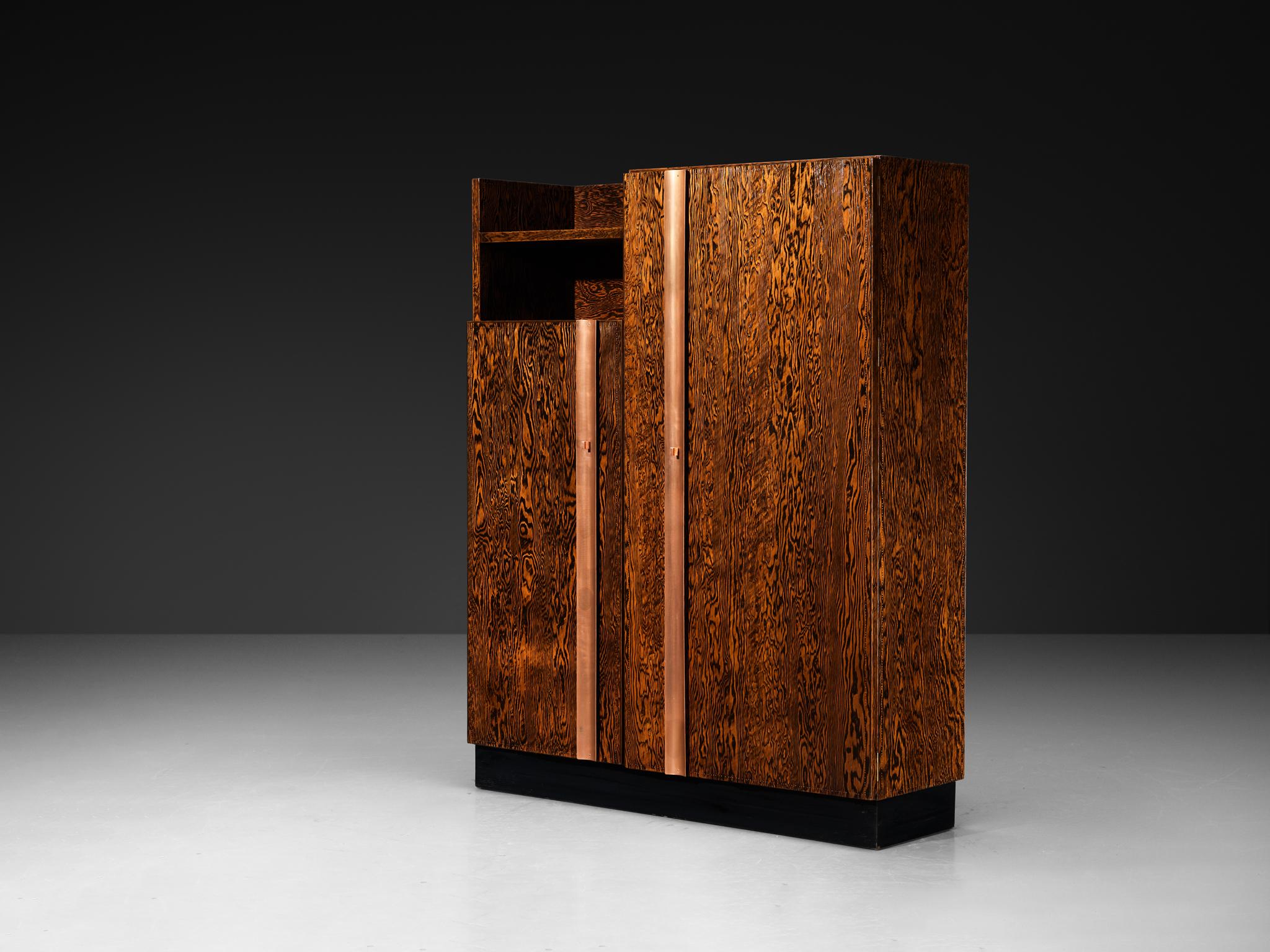
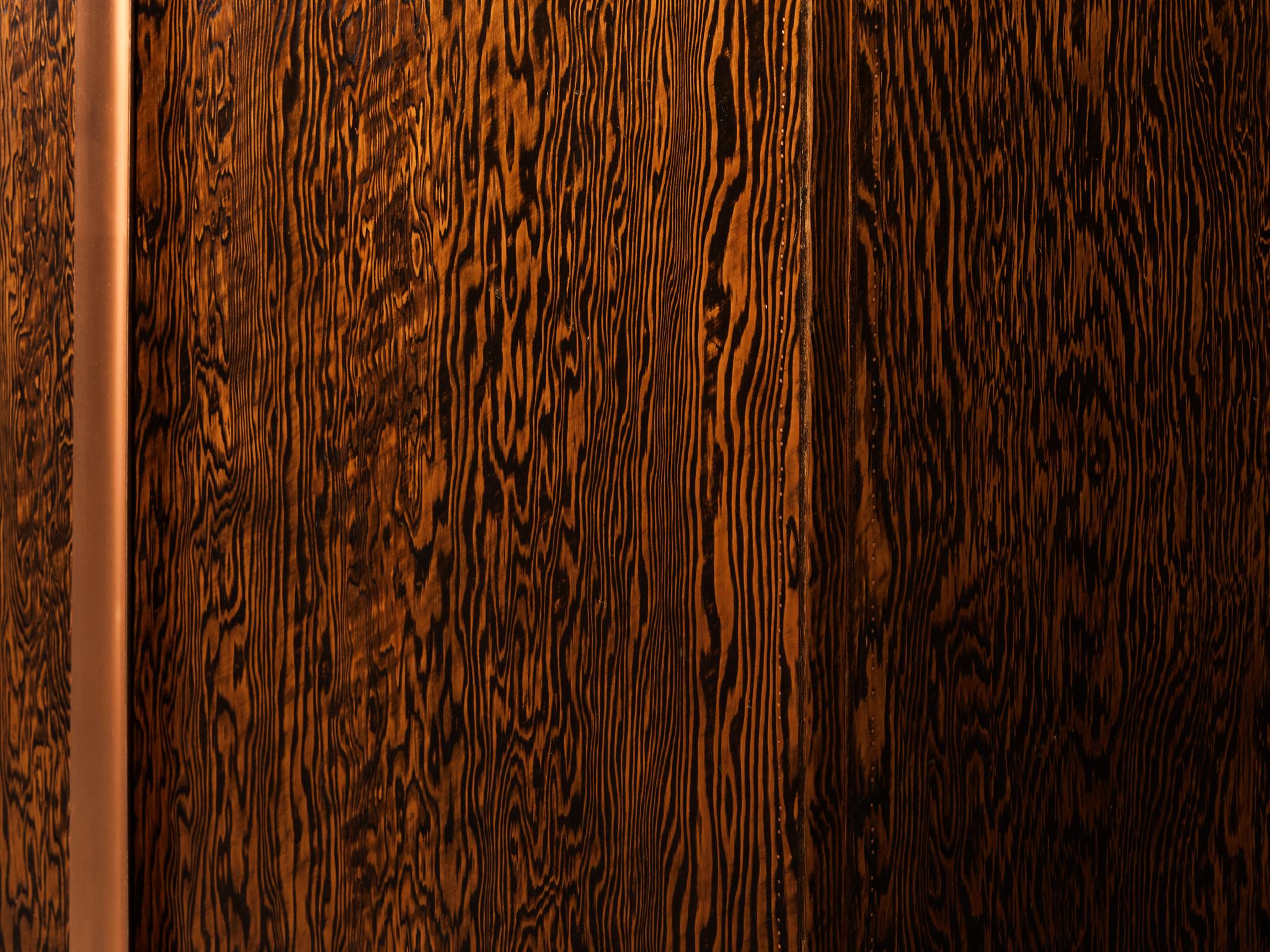
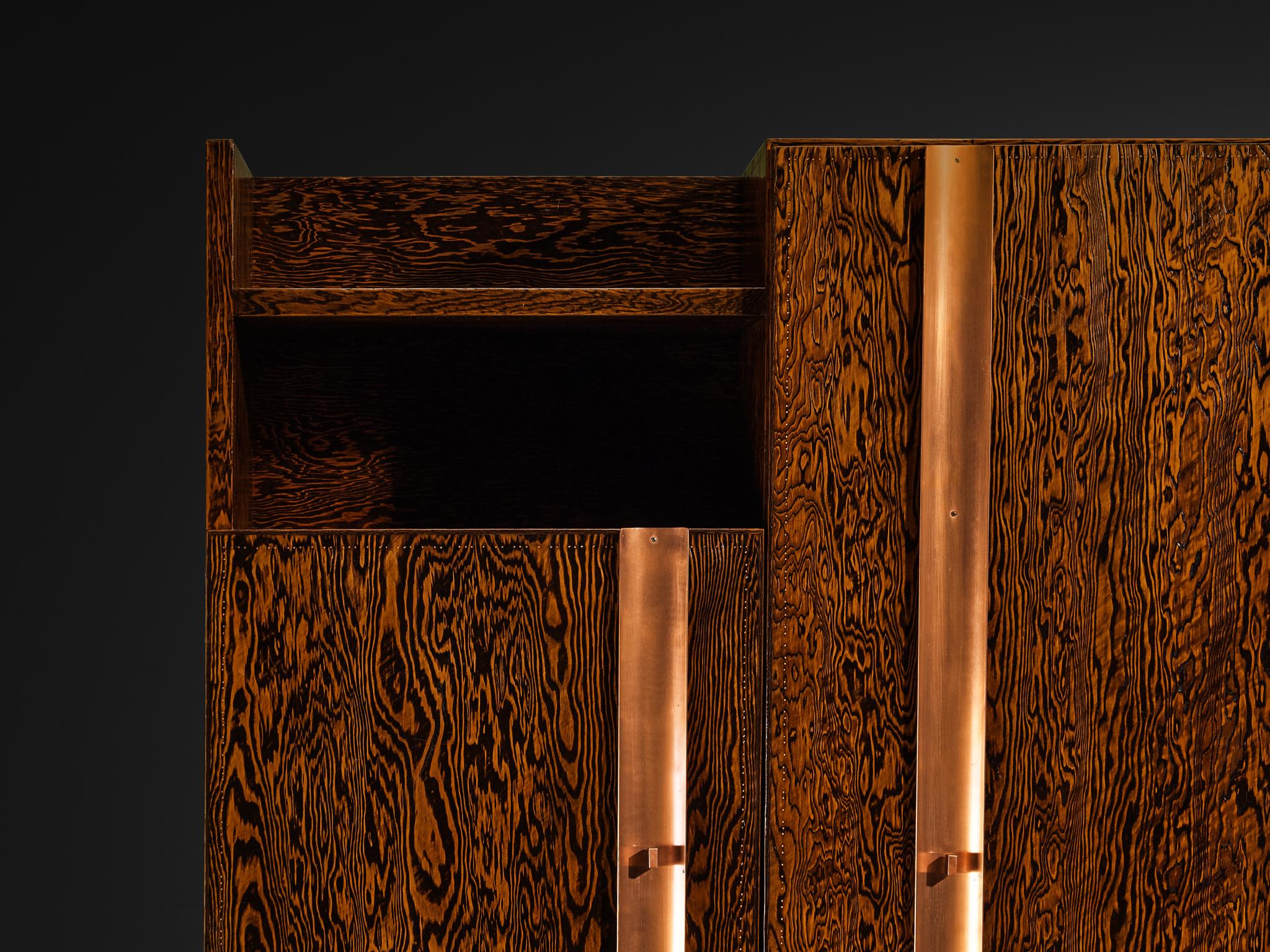
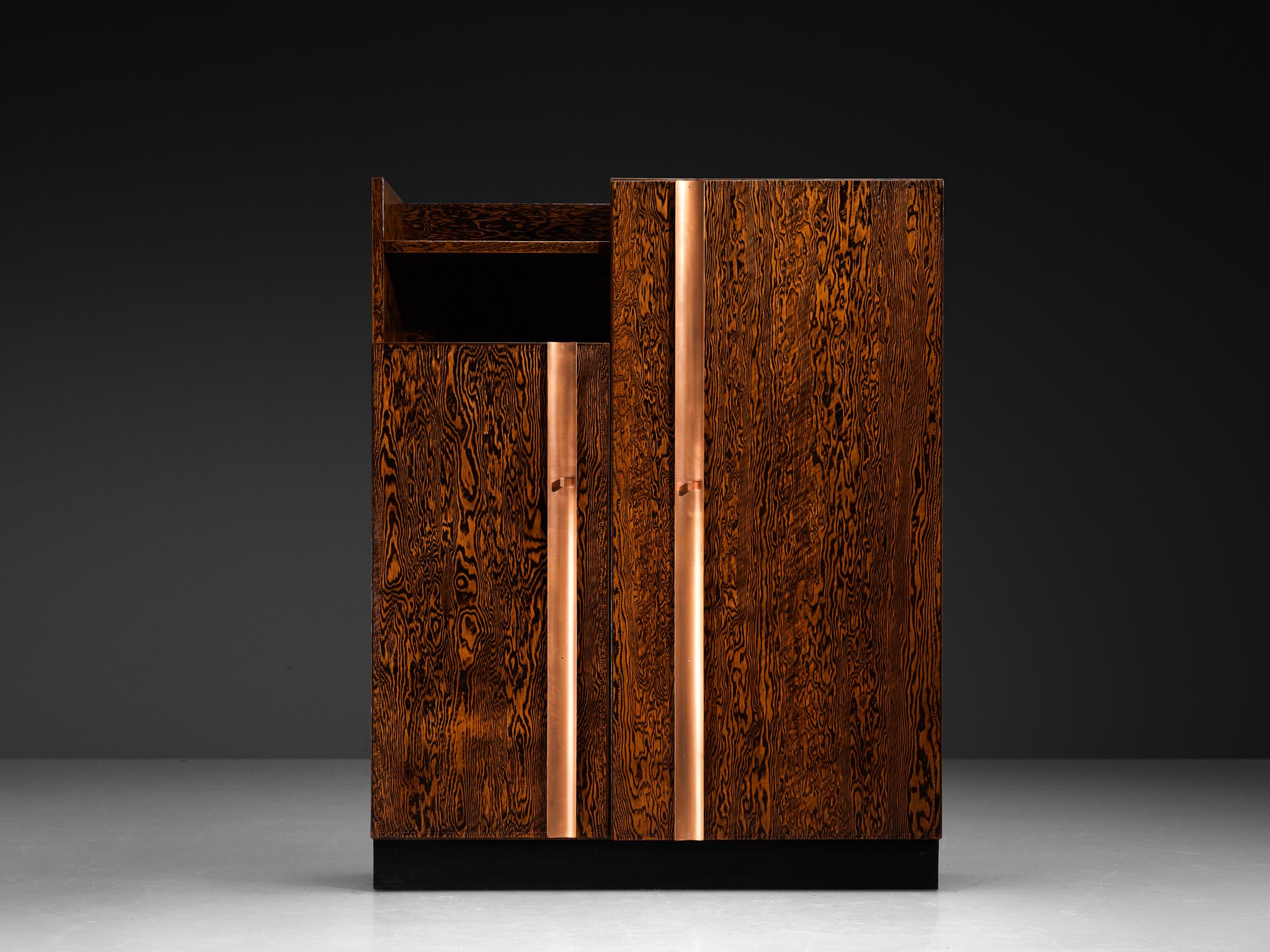
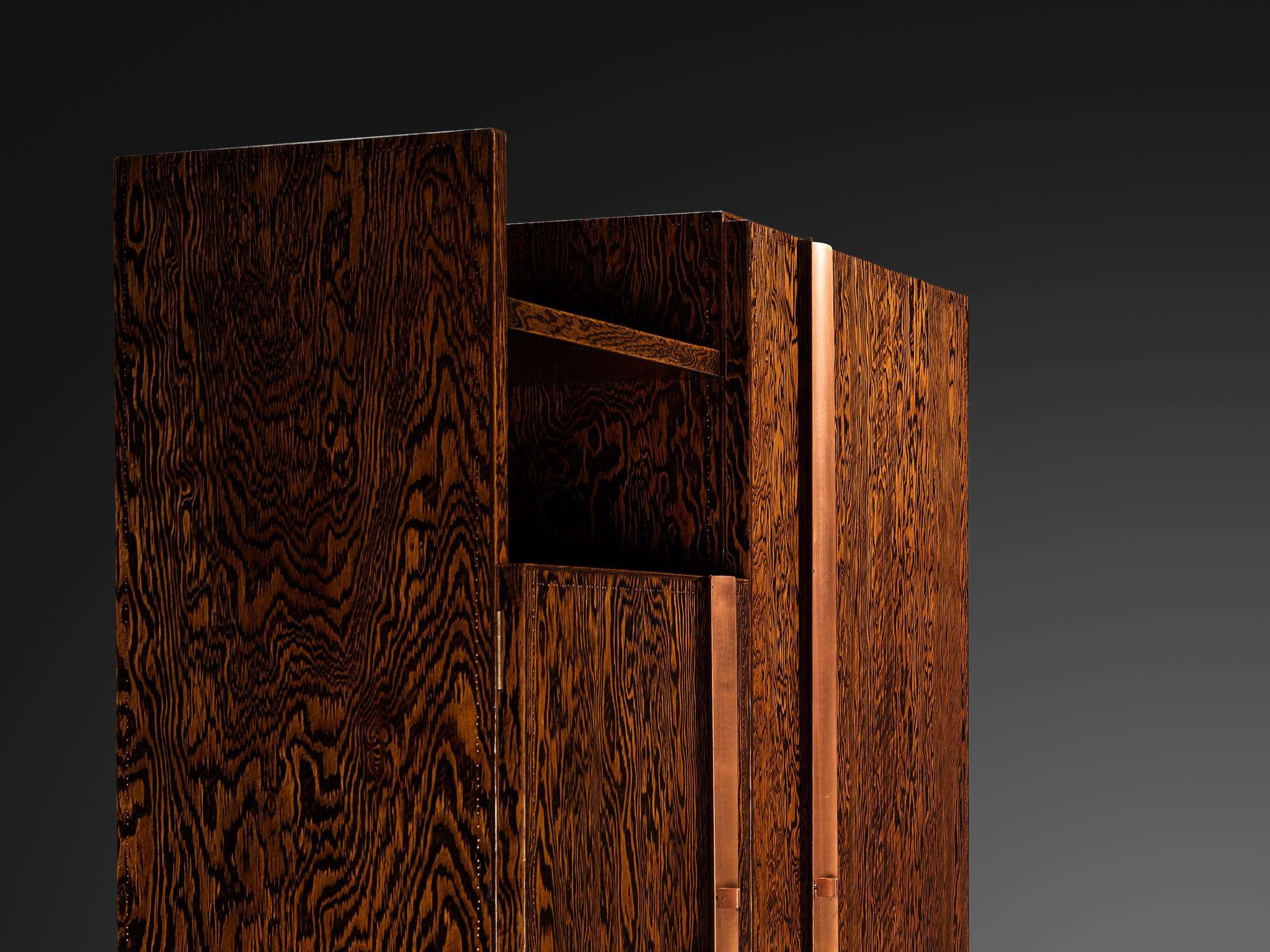
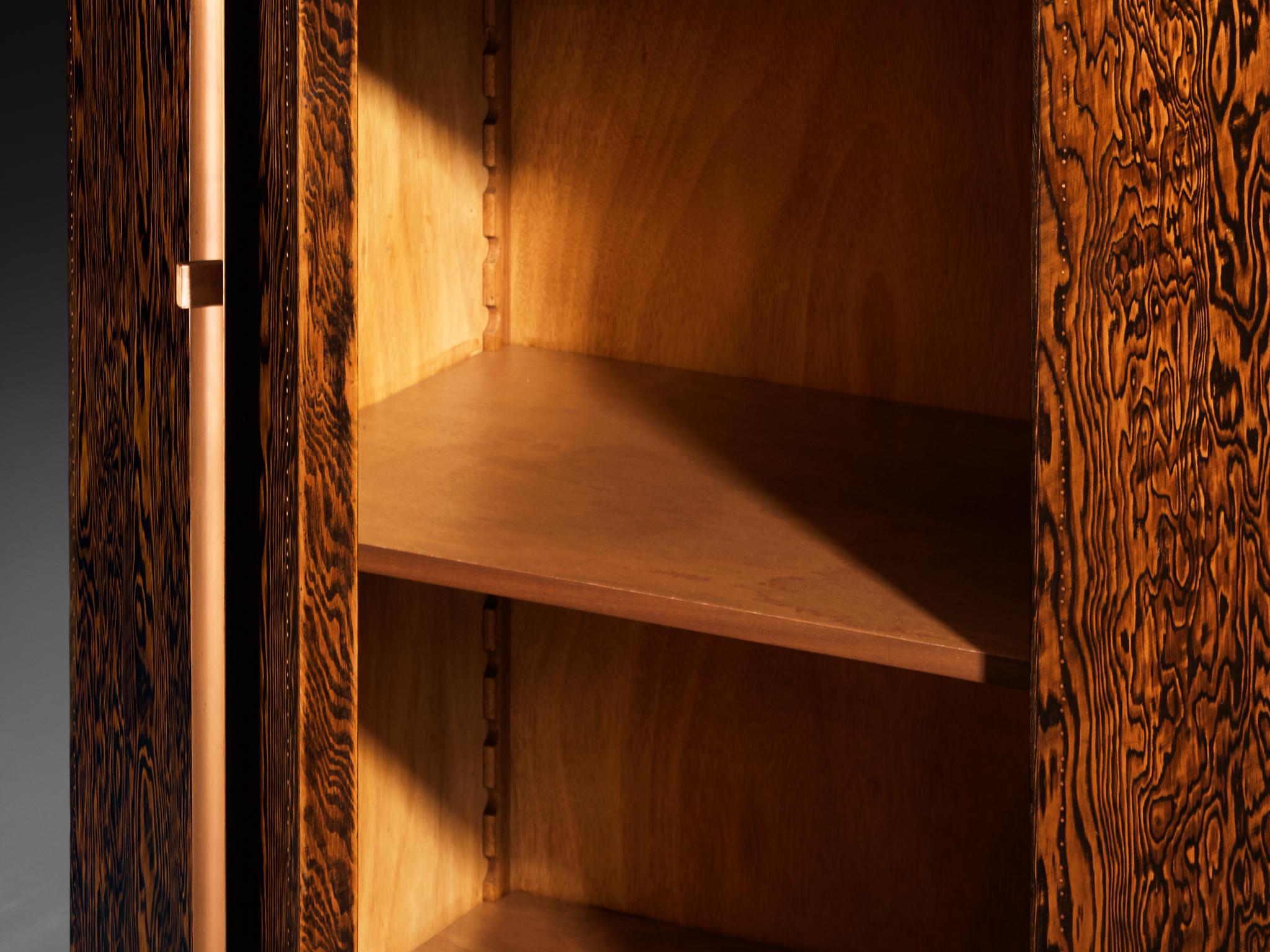
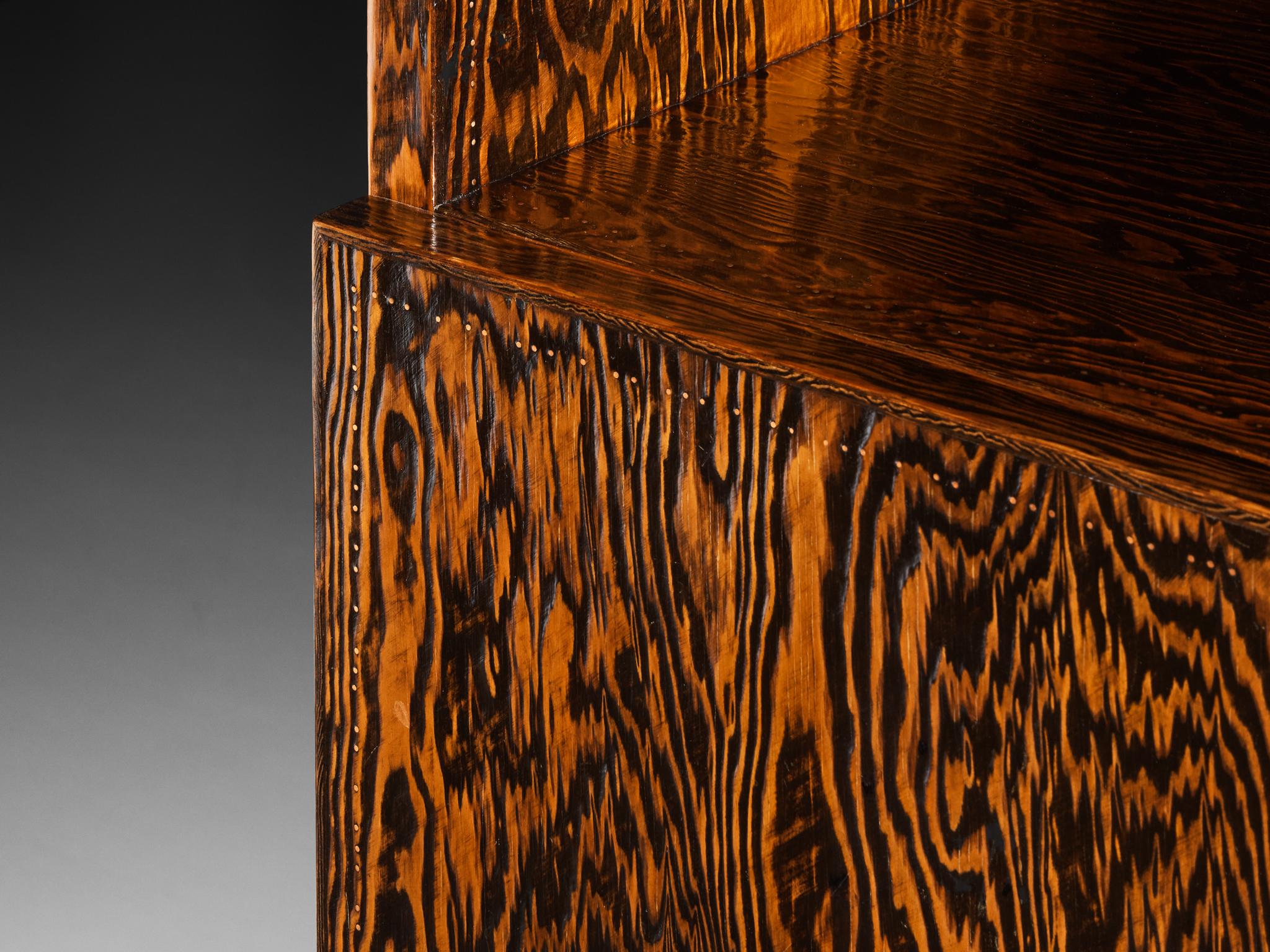
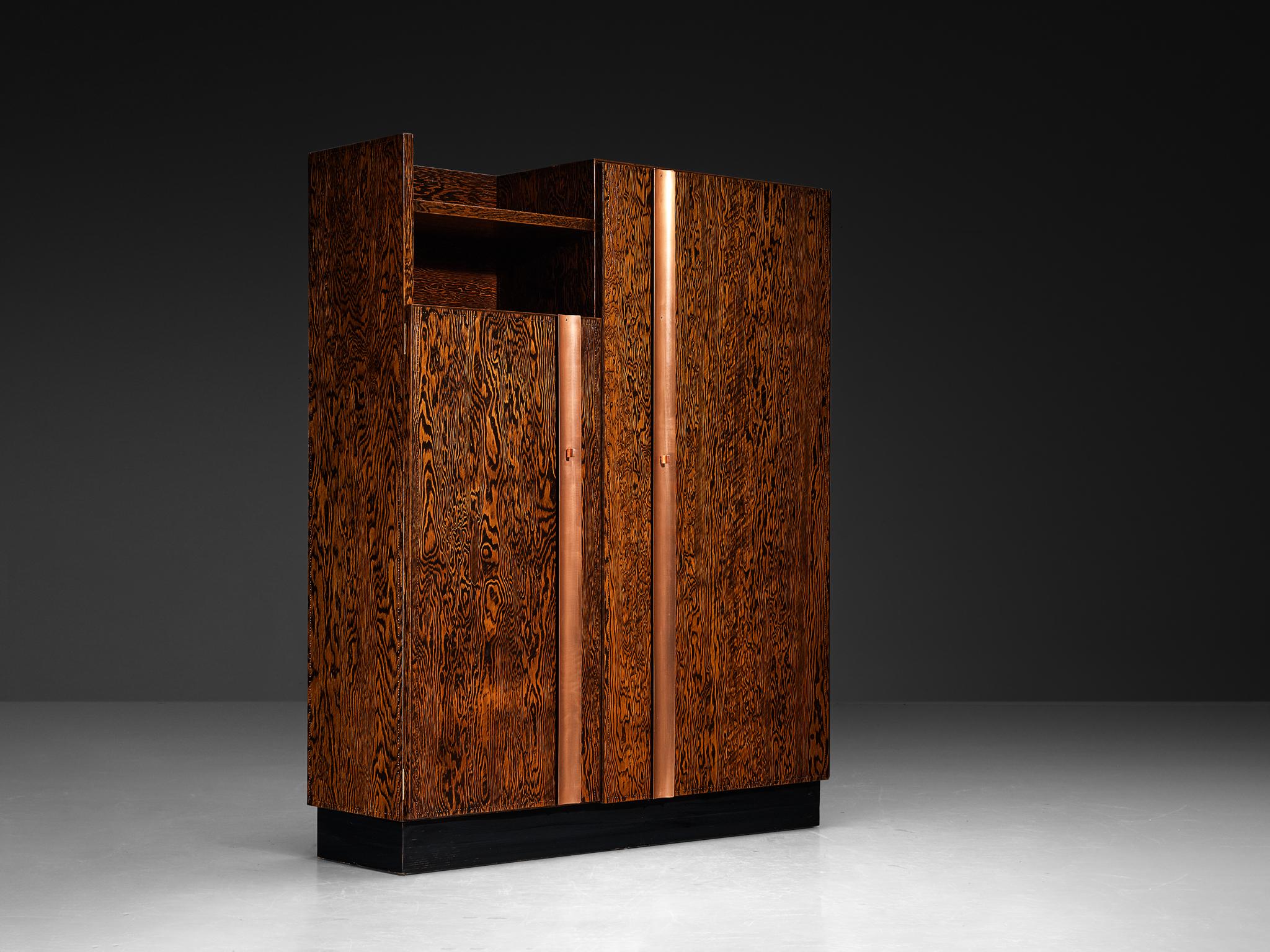
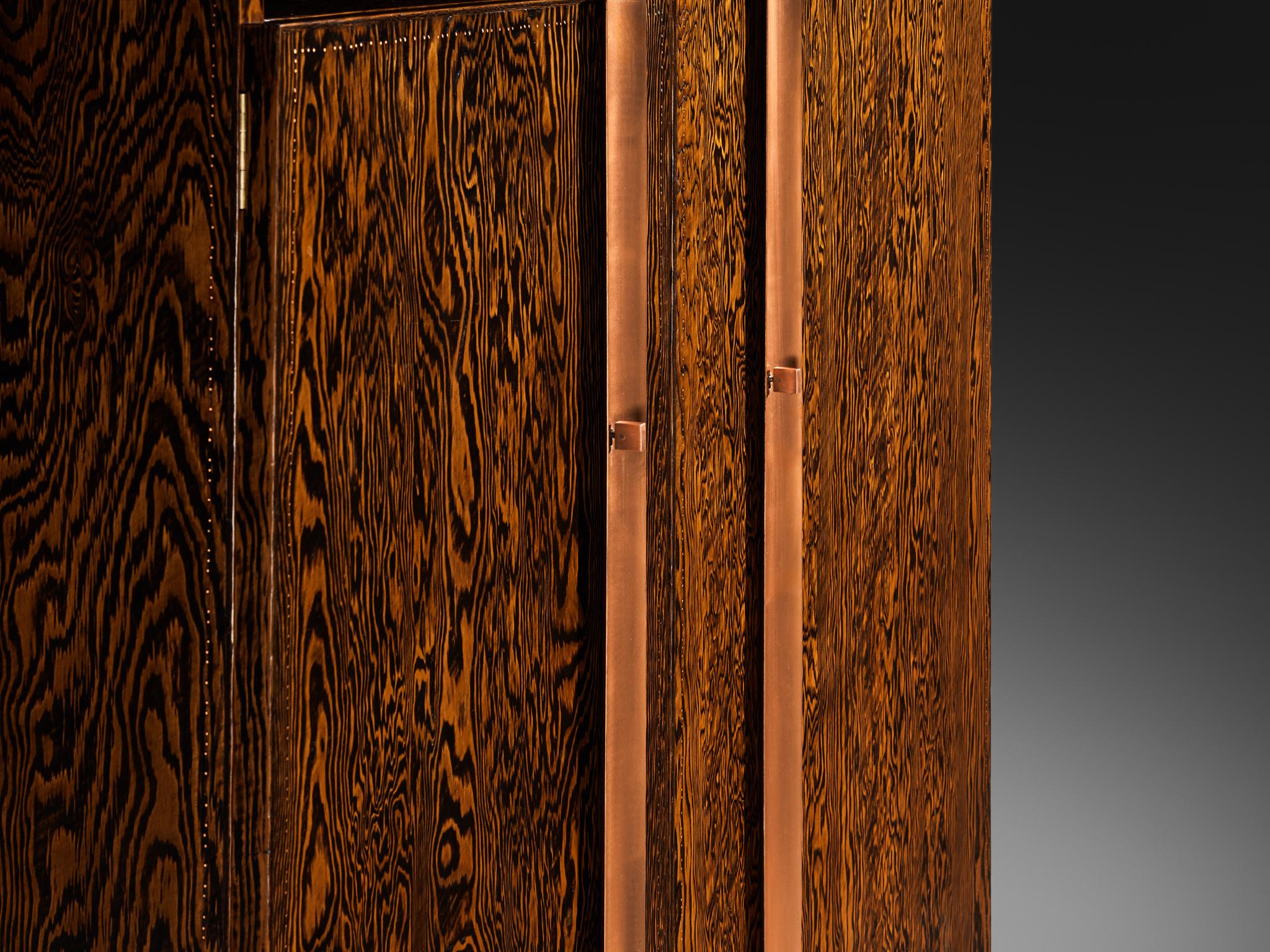
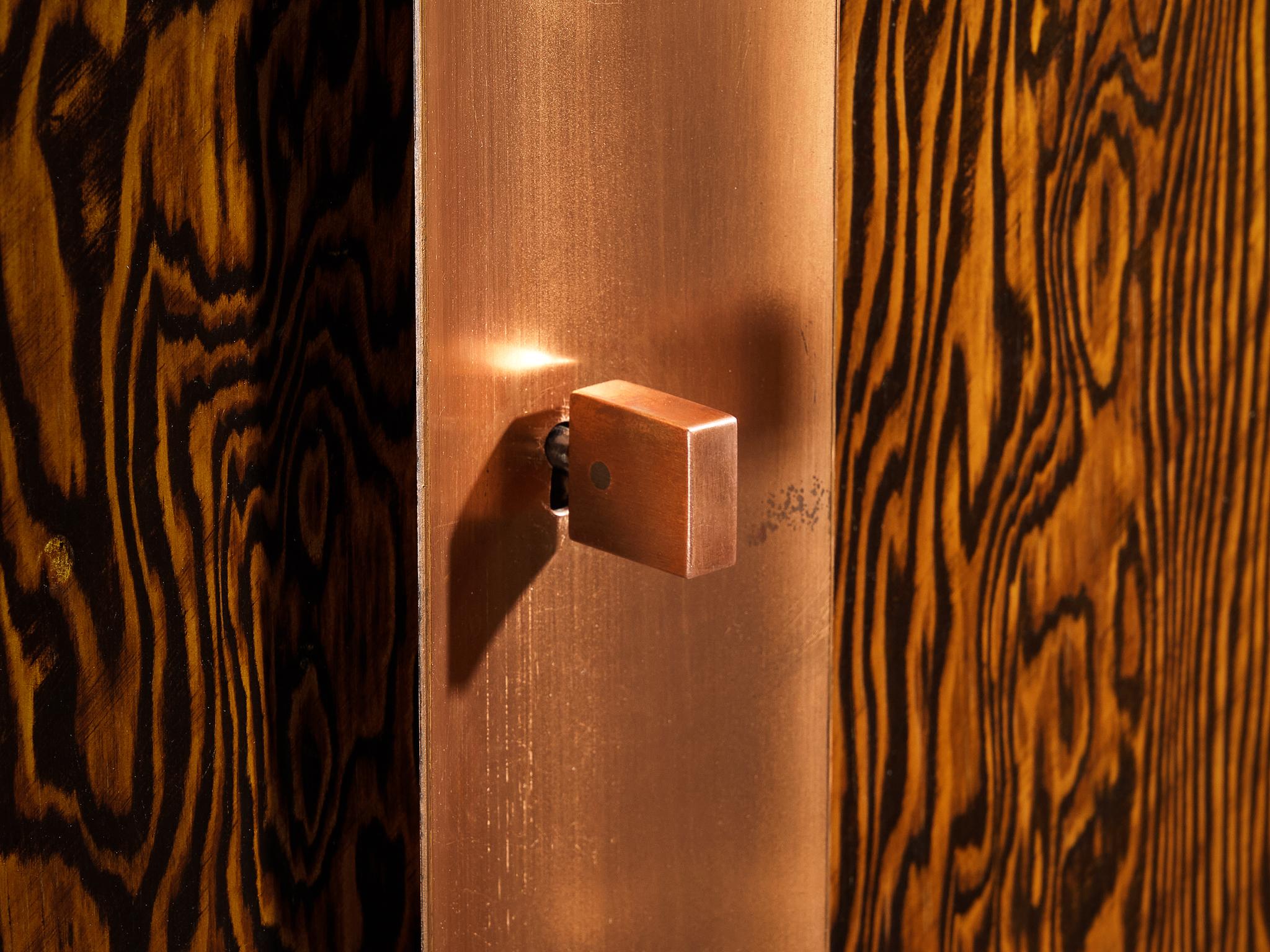
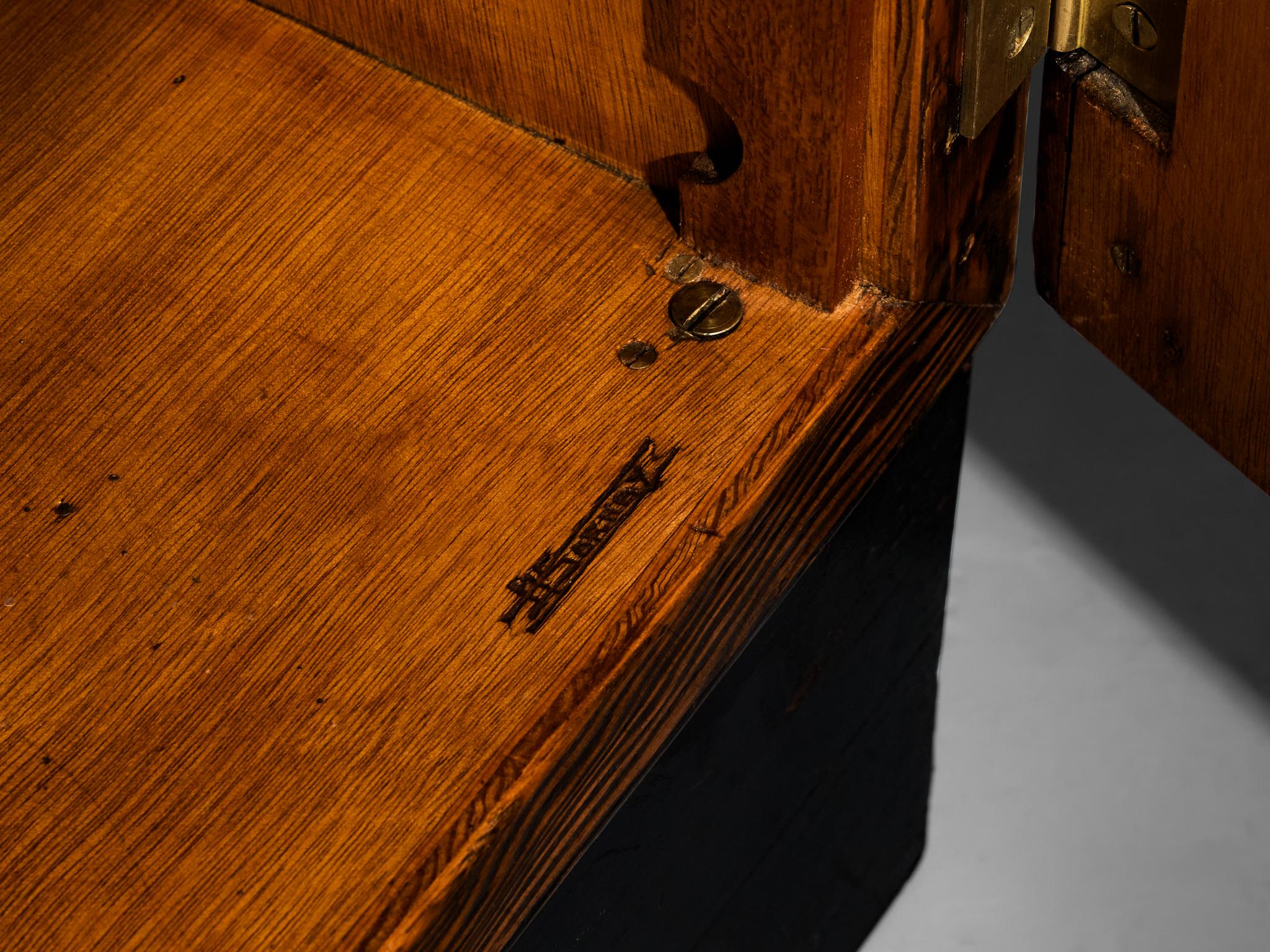
André Sornay Large Cabinet in Oregon Pine and Copper
André Sornay, large cabinet, Oregon pine, copper, France, circa 1934
This large cabinet, designed by André Sornay around 1934, exemplifies his idiosyncratic approach to design. Crafted from Oregon pine, a material Sornay adopted from 1934 onwards, the cabinet showcases the designer’s innovative use of an unconventional wood in traditional cabinetmaking. Alongside figures like architect and furniture designer Eileen Gray (1878-1976) and bookbinder and interior designer Pierre Legrain (1889-1929), Sornay was one of the few 20th-century creators to embrace Oregon pine, setting his work apart. Sornay treated Oregon pine in a highly specific manner to achieve an extraordinary finish. The wood was rotary-cut, a process where the log is spun to produce continuous sheets of veneer, resulting in a more dynamic and varied pattern than the conventional flat-slicing technique. He further enhanced this by brushing the wood with metal to create texture, staining it black, and then sanding the surface. This method left the recessed grain black, while the raised areas retained their natural orange hue, creating an intricate two-tone pattern of sinuous black and orange waves reminiscent of sun flames. By altering the direction of the grain and adding a bicolor effect, Sornay disrupted the linearity of the cabinet’s front panels, emphasizing its volume and adding depth.
This manipulation of form and pattern was closely tied to another key aspect of Sornay’s design philosophy: the projection of volume. In this cabinet, the principle is further evident through the careful arrangement of structural elements, where certain components are recessed or extend beyond the frame. These deliberate choices give the piece a strong architectural presence and a heightened sense of three-dimensionality.
The cabinet also employs Sornay’s signature cloutage technique, patented in the early 1930s. Cloutage, derived from the French word "clou" (meaning nail), involves affixing thin plywood panels to a solid frame with an intricate pattern of nails. In Sornay's work, the nails not only served a decorative purpose but were also integral to the construction, with their deliberate visibility becoming a defining feature. The '1-2-3 cloutage' pattern on this cabinet, characterized by its calculated spacing, enhances the structural framework.
Additionally, the cabinet is distinguished by vertical, concave copper bars that run the full length of the doors and function as handles. This striking design element highlights the structure of the piece, juxtaposing the expressive grain of the Oregon pine with the smooth, polished copper. For Sornay, aesthetics was always secondary to technique; he stated that “a cleverly placed lock can suffice to decorate the whole.”. The practical aspect doubled as decoration, creating a feature that appears authentic precisely because it serves a useful purpose.
This cabinet is a stunning manifestation of Sornay’s design ethos, where construction, assembly, and ornamentation become one. It is a modernist masterpiece that bridges the gap between traditional craftsmanship and the emerging industrial techniques of the first half of the 20th century.
VAT within the EU: When buying or delivering an item within the EU, VAT usually applies and will be added.
Choose options











Product Details